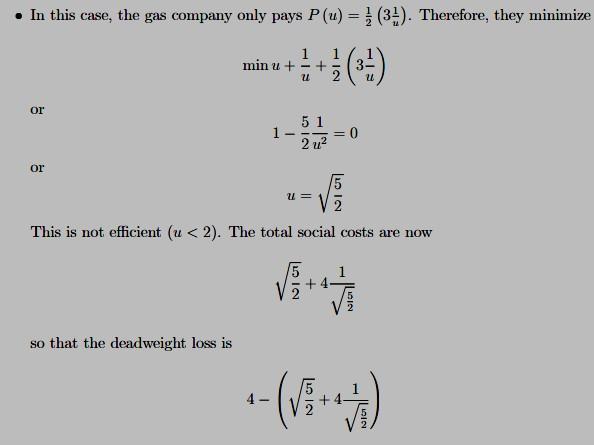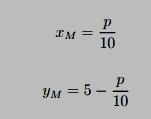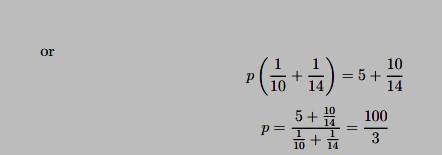




For each of the examples below, please answer the following:
Does an externality exist? If so, classify the externality as positive/negative (or both).
If an externality exists, determine whether the Coase theorem applies (i.e. is it possible to asign property rights and solve the problem?)
If an extenality exists and the Coase theorem does not apply, argue which of the government's tools are best suited to address the issue: quantity regulation, taxes/subsidies, tradeable permits, or something else.
Consider
For each of the examples below, please answer the following:
Does an externality exist? If so, classify the externality as positive/negative (or both).
If an externality exists, determine whether the Coase theorem applies (i.e. is it possi- ble/reasonably feasible to asign property rights and solve the problem?)
If an extenality exists and the Coase theorem does not apply, argue which of the government's tools are best suited to address the issue: quantity regulation, taxes/subsidies, tradeable permits, or something else.
Consider the following examples:
British Petroleum drills for oil in the gulf coast
Yes; accidents on oil rigs that cause spills impose a negative externality on others (e.g. inhabitants of gulf states). (optional answer: Oil drilling may also yield a positive ex- ternality if the identification of the location of oil allows other companies to drill for oil more effectively b/c they know where the oil is).
If oil spills only damage property, and these property owners can costlessly recoup costs in the legal system, then the drillers will internalize the impact of their drilling on the social cost of the oil spill. But, if it is hard to determine the true costs from an oil spill (e.g. may be hard to figure out whether someone lost their job b/c of an oil spill or b/c of some other reason), then the coase theorem may not apply. (Also, in the positive externality case: may be difficult to assign property rights to an oil field after it is identified, so coase theorem may not apply).
Quantity regulation on the amount of safety/advanced drilling technology investment seems feasible. One could also argue for subsidies for safer drilling technologies (or taxes on less safe technologies). Tradeable permits seems difficult here, since it's not clear what the permits would specify (but I'm open to a good suggestion!).
Carbon emissions from vehicles
Yes; Classic negative externality: I drive my car and emit gases that harm others
Coase theorem is unlikely to apply in this case, since it would require assigning property rights to those that are harmed. Since many of the harmed are very dispersed (e.g. driving in boston theoretically harms everyone in the world a small amount) and in some cases involves the "unborn" (future generations facing global warming), the feasibility of negotiated private contracts is highly questionable.
As discussed in class, if we believe that the benefit curve is flat, we would want to price the carbon using a tax. Tradeable permits may be more desirable politically though. Quantity regulation would require differential quantities for each producer of carbon, since they all have differing marginal costs; therefore quantity regulation seems subopti- mal/difficult without instituting tradeable permits.
Bringing crying babies on a plane Yes; this is the worst negative externality known to all of mankind. Coase theorem does not apply: have you ever tried reasoning with a crying baby? Not many good solutions here. Sure, you can tax parents that bring babies on the plane and rebate the tax to those that are exposed to the crying. The bigger question though is why don't airlines already do more of this and lower the ticket price to everyone who is subjected to a crying Your upstairs neighbors throwing an awesome, but loud party Yes; but the externality is either positive or negative, depending on your taste for parties.
Coase theorem would require the neighbors to own the rights to holding the party. Then the neighbor would pay the other neighbor to have (or not have) the party. This could work (so an answer of "yes" is fine).
But, in reality, there are likely many different people who are affected by the throwing of the party (e.g. multiple neighbors hate the noise). Bargaining with all parties may allow one party to "hold-up" the others, rendering the coase theorem inapplicable.
Buying a car with added safety features that prevent the drivers/passengers' deaths in the event of an accident
Depends; If people drive more recklessly as a result of having a safer car, then buying the safety feature imposes a negative externality on other drivers. If having a safety feature does not change the likelihood of an accident or the impact on the other cars, then there is no externality.
The coase theorem does not apply: It would be incredibly difficult to write a contract with those with whom you may eventually be engaged in a car accident.
Quantity regulation (e.g. regulating the safety feature, or preventing it), or taxation would correct the externality (Yes, that's right, we'd theoretically want to tax the safety feature if it causes people to drive more recklessly). baby (or just serve free drinks or something when a baby starts crying)? It would seem that the airlines are in a better position to solve this than is the government. Why don't airlines do this?
An natural gas company in San Francisco owns many pipelines running underneath what is now populated areas. The company can invest 8u in the maintenance of the pipes. Maintenance affects two things. First, more maintanence means that the gas company will lose less gas in the pipes.
Assume that the value of lost gas is given by 1 so that more maintenance reduces the amount of lost gas. Second, more maintenance means less damage to the land above the pipes. Assume that value of the damage to the land above the pipes is given by 3 · 1 , so that more maintenance decreases the amount of damage to the land above.
What is the socially optimal level of maintenance, u? What is the value of lost gas? What is the value of land damage?
What level of u is chosen by the gas company when no one owns the land above the pipes? Now what are the total amount of damage reduction? What is the deadweight loss?
An natural gas company in San Francisco owns many pipelines running underneath what is now populated areas. The company can invest 8u in the maintenance of the pipes. Maintenance affects two things. First, more maintanence means that the gas company will lose less gas in the pipes. Assume that the value of lost gas is given by 1 so that more maintenance reduces the amount of lost gas. Second, more maintenance means less damage to the land above the pipes. Assume that value of the damage to the land above the pipes is given by 3 · 1 , so that more maintenance decreases the amount of damage to the land above. What is the socially optimal level of maintenance, u? What is the value of lost gas? What is the value of land damage? The
Suppose now that the gas company owns the land above the pipes. What level of u will they choose now? Is this optimal?
Suppose now that Jimmy Fallon, an ordinary private citizen, owns the property above the plant and can costlessly sue the natural gas company for the losses to his property. What level of u will be chosen by the natural gas company? How much will be paid from the gas company to Jimmy Fallon?
2Suppose now that the courts are imperfect: For every 81 in actual damage, only 50% of the damage can be recouped in court. So, if the true damage to Jimmy is 5, the gas company will only pay L .
Suppose Jimmy Fallon owns the property. What level of u will be chosen by the gas company? Is this efficient? If not, what is the deadweight loss?
Suppose the gas company owns the property. What level of u will be chosen? Is this efficient? If not, what is the deadweight loss? If your answer is different than in (a), why? Have we violated an assumption of the coase theorem?
economicshomeworkhelper.com
The socially optimal amount of maintenance is us = 2. The value of lost gas is 1 and the value of land damage is 3 .
What level of u is chosen by the gas company when no one owns the land above the pipes? Now what is the value of lost gas? What is the value of land damage? What is the deadweight loss? The gas company will solve so that or up = 1. The value of lost gas is 1 and the value of land damage is 3. The total social costs are therefore 1 + 1 + 3 = 5. In the social optimum, the social costs are 2 + 1 + 3 = 4.
2 2
Therefore, the deadweight loss is 5 — 4 = 1.
Suppose now that the gas company owns the land above the pipes. What level of u will they choose now? Is this optimal? If not, calculate the deadweight loss.
Gas company will mimize costs that include the damage to the land: min u + 3 1/u + 1/u and choose up = us = 2, which is optimal. There is no deadweight loss.
economicshomeworkhelper.com
Suppose now that Jimmy Fallon, an ordinary private citizen, owns the property above the plant and can costlessly sue the natural gas company for the losses to his property. What level of u will be chosen by the natural gas company? How much will be paid from the gas company to Jimmy Fallon?
Therefore, they choose u = 2, the social optimum. The gas company will pay Jimmy 3/2 for his property damage.
Suppose now that the courts are imperfect: For every 81 in actual damage, only 50% of the damage can be recouped in court. So, if the true damage to Jimmy is 5, the gas company will only pay L. Suppose Jimmy Fallon owns the property. What level of u will be chosen by the gas company? Is this efficient? If not, what is the deadweight loss?

Suppose now that Jimmy Fallon, an ordinary private citizen, owns the property above the plant and can costlessly sue the natural gas company for the losses to his property. What level of u will be chosen by the natural gas company? How much will be paid from the gas company to Jimmy Fallon?
Therefore, they choose u = 2, the social optimum. The gas company will pay Jimmy 3/2 for his property damage.
Suppose now that the courts are imperfect: For every 81 in actual damage, only 50% of the damage can be recouped in court. So, if the true damage to Jimmy is 5, the gas company will only pay L. Suppose Jimmy Fallon owns the property. What level of u will be chosen by the gas company? Is this efficient? If not, what is the deadweight loss?

Suppose the gas company owns the property. What level of u will be chosen? Is this efficient? If not, what is the deadweight loss? If your answer is different than in (a), why? Have we violated an assumption of the coase theorem?
This is the same as in part (3). The solution is efficient. The 50% recoup rate imposes a transactions cost, which violates the assumptions of the coase theorem.

Two power plants provide power to all of Cambridge: an MIT plant and a Harvard plant. Both power plants burn coal to produce electricity, and consequently produce smog as a by-product. The MIT power plant could reduce its smog, but at a total cost: sM (xM ) = 5 · x2 where xM indicates the total number of units of smog abated by MIT. The Harvard plant is slightly less efficient, and its total cost for cutting down on smog by xH is: sH(xH) = 7 · x2 + 10 · xH.
The Cambridge government hires a team of environmentalists who calculate that the total benefit of smog abatement to the city of Cambridge is 100 · (xM + xH). Calculate the socially optimal level of abatement for each power plant.
The Cambridge government considers imposing a tax on power production.
What tax should it impose to reach the abatement amounts you calculated in part (1)?1
Write down each firm's optimization problem under the tax, and show that each will privately choose the socially optimal abatement amount.
economicshomeworkhelper.com
10xM = 100 = xM = 10 90
14xH + 10 = 100 = x ⇒ H = 14
The Cambridge government considers imposing a tax on power production. What tax should it impose to reach the abatement amounts you calculated in part (1)?1
The optimal tax would be the negative of the marginal benefit, = —100 per unit of "non-abatement", or alternatively a subsidy of 100 for each unit abated. Write down each firm's optimization problem under the tax, and show that each will privately choose the socially optimal abatement amount.
Each firm, i = H, M, chooses to maximize max 100xi — si (xi) so that 100 = siJ (xi) = 10xM = 14xH + 10 and each firm chooses optimally.
Suppose that instead of taxation, the Cambridge government tries to regulate quantities. However, the city of Cambridge cannot write a law for each firm, so it simply declares that all Cambridge power plants must cut down on smog by xC Ξ 1 units each year. Show that this is not efficient with BOTH math and intuition.
Intuitively, this is inefficient because the marginal cost of abatement is different across the plants. The plants would like to abate at different levels. Mathematically, the marginal cost of abatement at Harvard is sJH (1) = 14 + 10 = 24. But, the marginal cost of abatement at MIT is sJM (1) = 10. Therefore, if MIT abated a bit more and Harvard a bit less, there could be more abatement for less cost. Suddenly, an economist is voted in as Mayor of Cambridge. She declares that Cambridge power plants must cut down on smog by 5 units overall. Additionally, she declares that firms will be able to competitively trade permits that will allow them NOT to abate. One of the mayor's old classmates from graduate school runs the MIT power plant, so the Mayor grants MIT 5 permits and Harvard 0 permits. As a result, Harvard is expected to abate by 5 units, and MIT (since it owns all the permits) is not expected to abate at all.
Harvard will surely want to buy some of MIT's permits. Explain intuitively (no math), why this trade might happen. The marginal cost of abatement at harvard when xH = 0 is 10, while the marginal cost of abatement at MIT is 10 ω 5 = 50. It's a lot cheaper to abate at Harvard than at MIT at the point where harvard does xH = 0 and MIT does xM =
5. Denote the number of permits that MIT holds as yM (so that xM = 5 — yM ), and denote the competitive price of permits as p. Derive the amount of permits that MIT will eventually hold as a function of p. MIT will choose to purchase permits until p = sJM (x ) = 10xM so that is the demand for permits.

(c)Calculate the amount of permits that Harvard will hold as a function of p. Harvard will purchase permits until
economicshomeworkhelper.com


(e)If the new mayor had divided the permits up differently, what outcomes would have changed and what would have stayed the same?
The abatement by each firm would remain the same. The equilibrium abatement levels do not depend on who owned the permits in the first place. But, the profits for each company depend on who owns the permits in the first place. If MIT owns the permits, they can sell them to Harvard and make more money (and vice-versa). But the amount of abatement done at each plant does not depend on who owned the permits in the first place.
economicshomeworkhelper.com